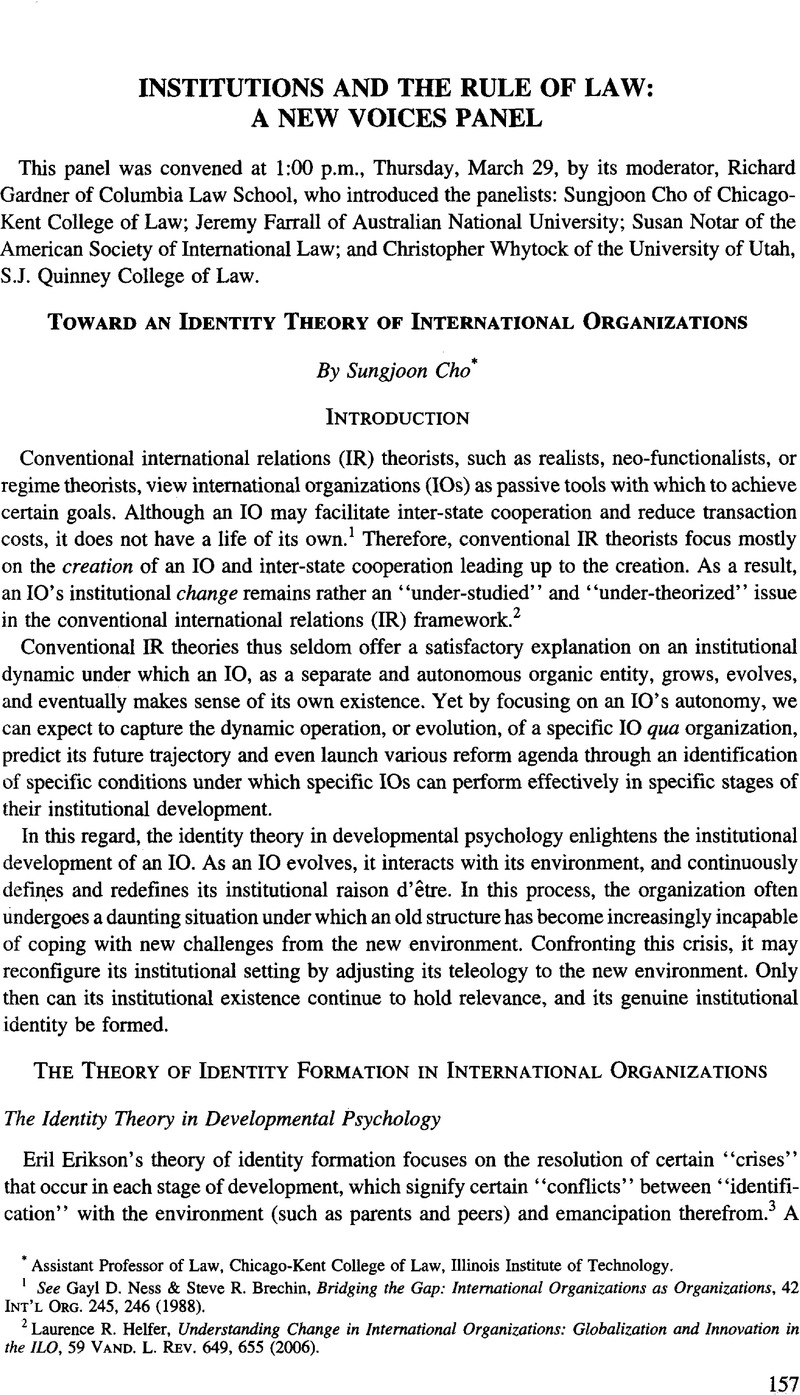Published online by Cambridge University Press: 28 February 2017

1 See Ness, Gayl D. & Brechin, Steve R. Bridging the Gap: International Organizations as Organizations, 42 Int’L Org. 245, 246 (1988)CrossRefGoogle Scholar.
2 Heifer, Laurence R. Understanding Change in International Organizations: Globalization and Innovation in the ILO, 59 Vand. L. Rev. 649, 655 (2006)Google Scholar.
3 See generally Erik Emkson, Identity: Youth and Crisis (1968).
4 Id. at 115.
5 Id. at 128.
6 Id. at 131.
7 Id. at 161.
8 Id. at 163-64.
9 Id. at 17.
10 Id. at 165.
11 Shihata, Ibrahim F.I., The Dynamic Evolution of International Organizations: The Case of the World Bank, 2 J. Hist. Int’l L. 217, 249 (2000)CrossRefGoogle Scholar.
12 See generally Sungjoon Cho, Free Markets and Social Regulation: A Reform Agenda of the Global Trading System (2003).
13 See Charnovitz, Steve, Triangulating the World Trade Organization, 96 AJIL 28, 29 (2002)CrossRefGoogle Scholar; Ostry, Sylvia, The WTO and International Governance, in The World Trade Organization Millennium Round: Freer Trade in the Twenty-First Century 285, 290, 293 (Deutsch, Klaus Günter & Speyer, Bernhard eds., 2001)Google Scholar; Alvarez, José E., How Not to Link: Institutional Conundrums of an Expanded Trade Regime, 7 Widener L. Symp. J. 1, 15 (2001)Google ScholarPubMed.
14 See Lamy, Pascal, The Place of the WTO and its Law in the International Legal Order, 17 Eur. J. Int’l L. 969 (2006)CrossRefGoogle Scholar (observing that “the WTO is well aware of the existence of other systems of norms and of the fact that it is not acting alone in the international sphere.”).
15 Nobles, Richard & Schiff, David, Introduction, in Luhmann, Niklas, Law As A Social System 8 (Kastner, Fatima et al. eds., 2004)Google Scholar.
16 ld.
17 See Sungjoon Cho, WTO’s Identity Crisis, Global Law Books, available at <http://www.globallawbooks.org/reviews/detail.asp?id=53> (Jan. 31, 2006), reprinted in 5 World Trade Rev. 298 (2006).